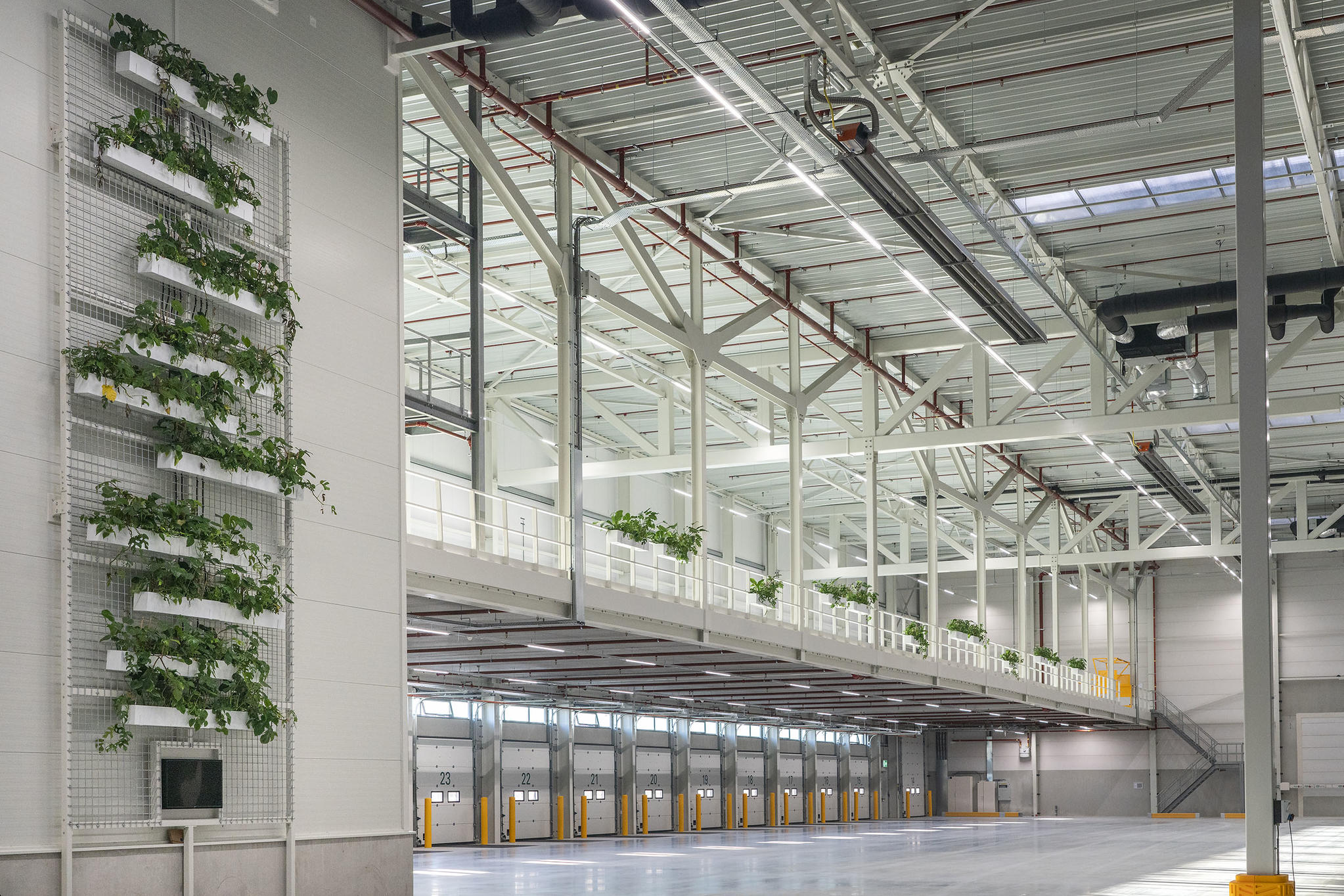In terms of the number of warehouses under construction, Poland ranks second in Europe. What is the reason for the attractiveness of our country?
The global warehouse market is generally booming. This is due to several factors. First, the reorganization of global supply chains. Second, the shift of sales structures towards e-commerce. These changes are most visible in the USA, but in Europe the Polish market is breaking out in terms of developer activity, even though in Poland we already have almost 23 million sqm of warehouse space. New projects are still being planned, and due to the growing demand, a further 3.4 million sqm is currently under construction.
Are the driving forces for our market the same as for the global one?
Yes, although as well as the reorganization of supply chains and the dynamic development of e-commerce, there is also growth in domestic consumption. In Poland, there is also still good access to land for new investments. By way of contrast, in the Czech Republic supply is already limited, and the situation is similar in Germany, the Netherlands and England, where the process associated with the commencement of construction is also as much as twice as long as in Poland. And there’s another factor: rental prices. Poland is still among the cheapest for renting warehouse space.
Only for now, though, because predictions are becoming louder and louder that this is about to change.
Construction costs are growing dynamically. This is related to higher costs of labor, as well as of raw materials, for which you have to pay an average of 20% more today than a year ago. However, expenses related to construction do not immediately translate into rental prices. This is happening with a delay, which is why the best estimates suggest next year will be the year for rental price increases. Especially as this pattern is already being seen in other European countries. There, rental prices have increased by an average of 7-10% annually, and in the USA by even 30%. In Poland the increase should be smaller, at around 3-4%, which should not dampen demand. We will remain an attractive market with potential for further development.
Is there anything that can stop the dynamic development of the market?
I would rather describe a possible slowdown, which may be caused by access to land for new investments. There is no problem with this in Poland yet. As such, in recent years the warehouse market has been developing at a rate of 10-12%. annually. However, nothing lasts forever, and such risks should be taken into account. That is why I believe that in two or three years access to plots may decrease, meaning less new projects. Another issue is access to building materials. This year we are seeing problems, especially with structural steel and sheet metal. For this reason, project implementation periods have been extended by six to even nine months.
More and more projects are being built, and probably in a different way? What should an ideal warehouse look like today?
The transformation has been taking place for several years, and the process is accelerating with each passing year. It all started with high storage spaces, which have become standard. Customers wanted to store more and more goods on the same floor space and thus optimize their rental costs. Today, the driving force behind changes are employees, who are becoming harder and harder to find. Employers, including those in warehouses, realize that if they want to limit turnover in the company – that is, to keep employees for longer – they must create attractive working conditions for them.
How can this be done?
Warehouses are no longer just four walls and a roof. They have to be employee-friendly facilities. Let's start with the temperature. It used to be said that it would be enough for it to be 16 degrees Celsius inside a warehouse. Today, it must be similar to that of an office, meaning changes in the way the building is insulated, as well as heating and air conditioning systems. Added to this is lighting; preferably high-quality LED lighting, which improves the safety and comfort of workers, complemented by natural sunlight. Social areas for employees are also becoming standard in warehouses, so that people working there can enjoy the same social benefits as those in office areas.
It's also important to ensure the availability of transport to work, whether public or paid for by the tenant. We, as a developer, can help customers in this regard by providing the appropriate infrastructure. Besides transport stops near our logistics parks, this means bicycle shelters, electric car charging stations, and special parking spaces for carsharing. We create relaxation zones where employees can relax during their breaks. We develop all these elements as part of our PARKlife™ program, which brings customers and their employees many such amenities. There are also sports fields, bicycle paths, outdoor gyms and reading areas, and even barbecue zones. We also provide facilities for people with reduced mobility. All this to help our customers reduce employee turnover, allowing them to keep costs in check without interfering with their operations.
Developers' expectations as to what warehouses should look like are one thing. But are they in line with what tenants want? After all, they are the ones who pay for the warehouse, and additional amenities usually mean costs.
A growing group of customers already understand the need for change. They know how the quality of real estate affects working conditions, and thus employees. We, as a company that manages over 90 million sqm of logistics space around the world, place great emphasis on innovation, even if customers don’t expect to see it so directly. We have the experience and knowledge that allows us to predict today what will be beneficial for them in the future. A warehouse being built in the here and now must be functional not just for a year, but for the next 20-30 years. As such, we have to look far into the future at the design stage in order to provide the customer with a space that will remain attractive for a long time. Remember that the needs of customers and their employees are constantly evolving, but it’s difficult to find an alternative to having a key location. So our task is to always be a step ahead of tenants’ expectations, which means effectively anticipating future trends.
Today we are dealing with the dynamic development of e-commerce, in which delivery times play an increasingly important role. Does this encourage the development of urban logistics, which can have a positive impact on reducing carbon footprint?
Polish cities are unusual. Take, for example, Warsaw. You can still get to the center from the outskirts in 20-30 minutes, so there is not yet any justification for moving warehouses into the city. On the other hand, it’s true that e-commerce has the potential to reduce the carbon footprint of logistics, as analyses by our Prologis Research department have shown. This is down to several factors, including supply consolidation and low-emission transport with electric and green storage. Minimizing the carbon footprint of real estate in cities is of great importance, and we are now building a new small business unit in Warsaw's Żerań based on this need; this is how all our investments are created, regardless of their location. Our way of reducing emissions is to design warehouses with the lowest possible environmental impact.
Is certification part of this trend, confirming the company's responsible attitude towards the environment?
Environmental certificates are becoming more and more popular. They are, however, a tool – not an end goal. They are supposed to show the level of development of ecological warehouse construction, but this is only one element in a holistic approach to sustainable development within the industry. We have been certifying our facilities for over 13 years, all over the world, at different levels depending on the region. In Poland, Prologis was the first logistics developer to start getting its industrial buildings certified. All our investments are now subject to Very Good accreditation or higher.
What types of warehouses will be in demand in the near future?
I think we should not expect great changes in the structure of supply and demand. The market will continue to be dominated by warehouses ranging in size from 3,000 to 5,000 sqm This year, however, there is greater interest in large facilities with areas of 60,000-100,000 sqm. This is a result of the dynamic development of e-commerce, and the greater demand from retail chains for goods storage. It is also influenced by changes in supply chains, which are shortening. These changes translate into more e-commerce projects – in the last year, we have implemented 15 such projects.
What will Prologis focus on in 2022 - new ecological solutions, or technological innovations?
Our development strategy will not change. We will continue the activities we have begun so far, so the important pro-environmental solutions supporting our customers in recruiting employees will remain key. We will also work even more closely with our tenants to reduce operating costs. Huge increases in the prices of energy and gas have made many of our customers realize how important it is to properly manage their operating costs. We are looking forward to supporting them in this.
How?
By consolidating all our companies, we have become a large purchasing group. This increases our negotiating power with energy or gas suppliers, which means more favorable purchase prices for utilities. Additionally, we have created and implemented several different purchasing models. This allows us to apply the best purchasing model in any given situation, or modify it as necessary. We also focus on solutions that will help reduce the risk of price increases. I’m thinking, for example, of the installation of renewable energy sources in our warehouses. These allow warehouses to become not only more environmentally friendly, but also more energy efficient. Providing warehouse space that has the least impact on the environment and the greatest possible benefit for customers is our goal, and something we have been pursuing for many years.
The material was created in cooperation with Prologis in Dziennik Gazeta Prawna.


